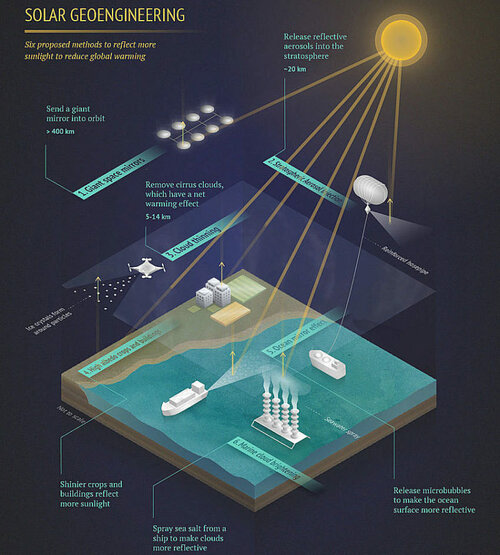- Joined
- 18 May 2019
- Messages
- 640
- Reaction score
- 1,673

Solar geoengineering — putting aerosols into the atmosphere to reflect sunlight and reduce global warming — is not a fix-all for climate change but it could be one of several tools to manage climate risks. A growing body of research has explored the ability of solar geoengineering to reduce physical climate changes. But much less is known about how solar geoengineering could affect the ecosystem and, particularly, agriculture.
Now, research from the Harvard John A. Paulson School of Engineering and Applied Sciences (SEAS) finds that solar geoengineering may be surprisingly effective in alleviating some of the worst impacts of global warming on crops.
The research, a collaboration with the Norwegian Research Centre and the Bjerknes Centre for Climate Research, the Norwegian University of Science and Technology, the National Center for Atmospheric Research in Boulder, Seoul National University and the Chinese Academy of Sciences, is published in Nature Food.
“Research on solar geoengineering must address whether or not it is effective at reducing human impacts of climate change,” said David Keith, the Professor of Applied Physics at SEAS and Professor of Public Policy at the Harvard Kennedy School. “Our paper helps fill that gap by using the best crop model yet embedded in a climate model to examine the potential impact of solar geoengineering on agricultural yields.”
The team looked at three types of solar geoengineering — stratospheric aerosol injection, marine sky brightening, and cirrus cloud thinning — and their impact on the global yield of maize, sugarcane, wheat, rice, soy and cotton in a business-as-usual future where emissions continue at their current levels.
In such a future, the most effective way to protect crops against the worst effects of global climate change is to reduce the surface temperature. The researchers found that all three potential solar geoengineering methods have a strong cooling effect that would benefit crop yields.
Previous research suggested that cooling temperatures brought on by stratospheric aerosol injection may also lead to less rainfall, which could result in yield loss for rainfed crops. But these studies didn’t look at one of the most important ecological factors in crop transpiration and productivity — humidity.
“Relative humidity or vapor pressure deficit has stronger control on plant water use and crop productivity than precipitation,” said Yuanchao Fan, a Fellow in the Harvard Solar Geoengineering Research Program and first author of the paper. “We found that in a cooler world under multiple scenarios, except cirrus cloud thinning, there will be higher relative humidity, which will alleviate water stress for rainfed crops. Our model shows that the change in precipitation resulting from all three solar geoengineering methods would, in fact, have very little effect on crops.”
The researchers compared how agricultural productivity is affected by solar geoengineering and emissions reductions. The researchers found that while emissions reductions have strong cooling and humidity benefits, they may have a smaller benefit for crop yields than solar geoengineering because the reduction of CO2 fertilization reduces the productivity of most crops compared with solar geoengineering that achieves the same temperature reduction. The finding highlights the need to combine emissions reductions with other tools, including increasing the use of nitrogen fertilization and changes to land use.
“Climate risks cannot be resolved with any single tool; even if emissions were eliminated tomorrow the world’s most vulnerable will still suffer from climate change,” said Keith. “Policymakers need to consider how emissions cuts might be supplemented by specific local adaptations to help farmers reduce the impacts of climate on agriculture, and by global actions such as carbon removal and solar geoengineering.”
Model shows solar geoengineering may be surprisingly effective in alleviating impacts of global warming on crops
Research offers better understanding of solar geoengineering’s effect on agriculture
Last edited:




